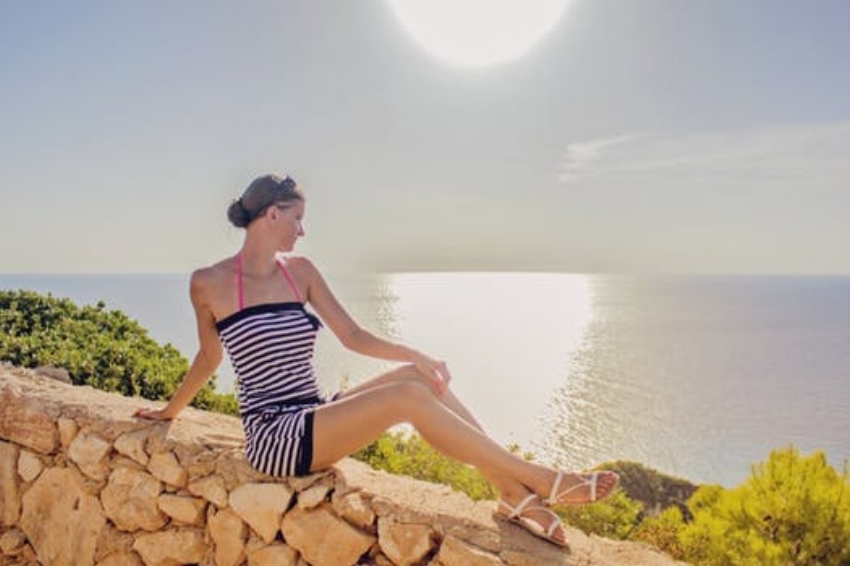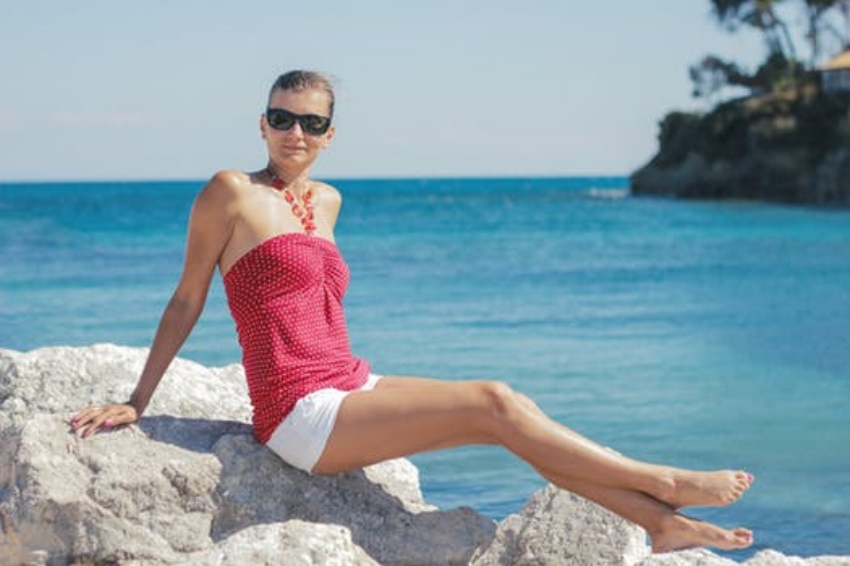Healthy Ways To Treat Varicose Veins!
Most women have a fear of the “grandma disease” that is also known as varicose veins that affect more than 30% of women. These are bumpy bluish veins that appear on the legs and are something that affects the young and the old. It is a problem that affects not only the health but the confidence of many women who forgo wearing their favorite leg-baring skirts, dresses, and shorts to hide the unsightly blue larger blood vessels that invade their legs and ankles and stick out from the skin like raised tunnels.
Many women fear that they will be stuck with wearing granny-style compression stockings for the rest of their lives; but the good news is that combined with noninvasive medical treatments and healthy lifestyle changes, health conditions and the cosmetic insecurity arising from vein disease can be greatly improved these days. So let’s take a look at some healthy ways to treat varicose veins.
The Size Of The Varicose Vein Problem
Veins are the blood vessels that return the blood from which oxygen has been extracted back toward the heart, so the veins in your legs usually have to pump the blood upwards, working against the force of gravity. The problem arises when the valves that prevent blood from draining back down the leg fail, and so the blood pools, placing additional pressure upon the walls of the veins.
Varicose veins are very common in the legs because, these veins are the farthest away from your heart, and, like we said above, the force gravity makes the upward flow of blood harder. This, in turn, causes the veins to bulge and twist under pressure – that condition creates varicose veins.
The American Society for Vascular Surgery reports that somewhere between 20 to 25 million Americans have varicose veins. Approximately 23% of US adults have varicose veins. If spider-veins are also considered are also considered, the prevalence increases to 80% of men and 85% of women. Generally more common in women and older adults, varicose veins affect 22 million women and 11 million men between the ages of 40 to 80 years ( Circulation).
Statistics further show that 17% of men and 33% of women have varicose veins. In fact, more people are unable to work due to vein disorders than due to arterial disease. (Vascular Disease Foundation Newsletter, Spring 2005).
What Causes Varicose Veins?
There are particular factors that determine your propensity to develop varicose veins and you should know that women are four times more likely than men to develop varicose veins.
The primary factors that make some people more likely than others to develop varicose veins are:
Age - one out of two people over the age of 50 years old develop varicose veins
Heredity – if your parents have them, you are likely to be predisposed; 60 % of daughters whose mother had varicose veins also get them
Inactivity - never good for any health issue
Obesity - again, being overweight is the cause of so many health ailments
Hormone changes – from using birth control pills, progesterone and estrogen
Leg injury - physical damage to the vessels
Pregnancy - which increases blood volume and pressure to the stomach and pelvis
In general, to minimize the risk of developing vein disease you should look to be as active as possible and eat healthily to improve your cardiovascular system. You should know that poor lifestyle choices and habits, such as being sedentary, and unhealthy eating habits are common factors – in a study by the National Institutes Of Health (NIH) in 2005, researchers found that varicose veins are most common in Western Nations where people do not perform a lot of physical activity. .
What Can You Do To Prevent And Treat Varicose Veins?
Try these healthy and practical ways to reduce blood pressure, and the risk of forming, reducing the symptoms of and preventing the formation of new varicose veins:
i. Change Your Lifestyle
Try to avoid standing for extended periods of time.
Watch your diet, Lose weight or maintain a healthy weight.
Exercise regularly to improve your circulation.
Use compression socks or stockings to enable better blood flow.
ii. Surgery
If you do not see improvement from these healthy lifestyle changes aren’t working, or your varicose veins are causing discomfort and pain, you should seek medical advice, so that your doctor can look at the extent to which the varicose veins might be damaging to your health. On occasion, they can be symptomatic of other poor health conditions such as deep vein thrombosis, blood clots, poor circulation and leg swelling, and can lead to ulceration.
If your legs feel heavy or sore at the end of the day or with physical activity you should seek medical advice. After diagnosis, your doctor might try a minimally n invasive treatment, including
Endovenous laser (thermal) ablation, whereby a guided laser heats up and kills off the targeted vein.
Sclerotherapy, using a liquid or foam chemical injection h an irritating substance that causes the blood vessel to close.
Endoscopic vein surgery, using a small lighted scope inserted through a small incision to block off a vein
Ambulatory phlebectomy which removes the varicose veins through a tiny (1mm) incision during an outpatient procedure.
You should always talk to your doctor about your treatment options and the risks before choosing a method. The method recommended for you can depend on your symptoms, size, and location of the varicose vein.
So What Can You Expect For The Future If You Are Living With Vein Disease?
The good news is that treatment is more advanced and effective than ever. According to experts, treatment today is more advanced than ever, with no scars or cutting and very minimal recovery. Most procedures are done in an office setting, away from the hospital and are performed without the need for general anesthesia. In addition, there are cosmetic procedures that can to hide or reduce the unsightly appearance of varicose veins.
So do not despair if you have varicose veins, because even if you don’t like the look of them the prognosis for living without discomfort or damaging health consequences is better than ever.





